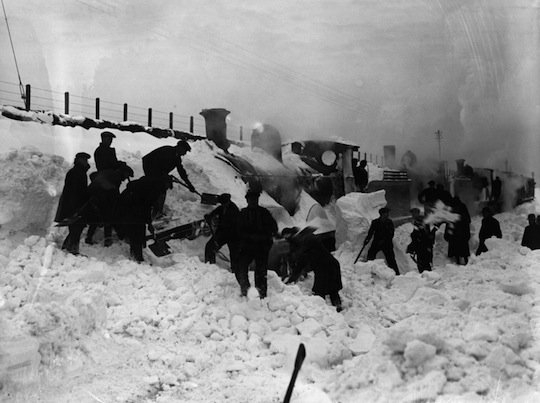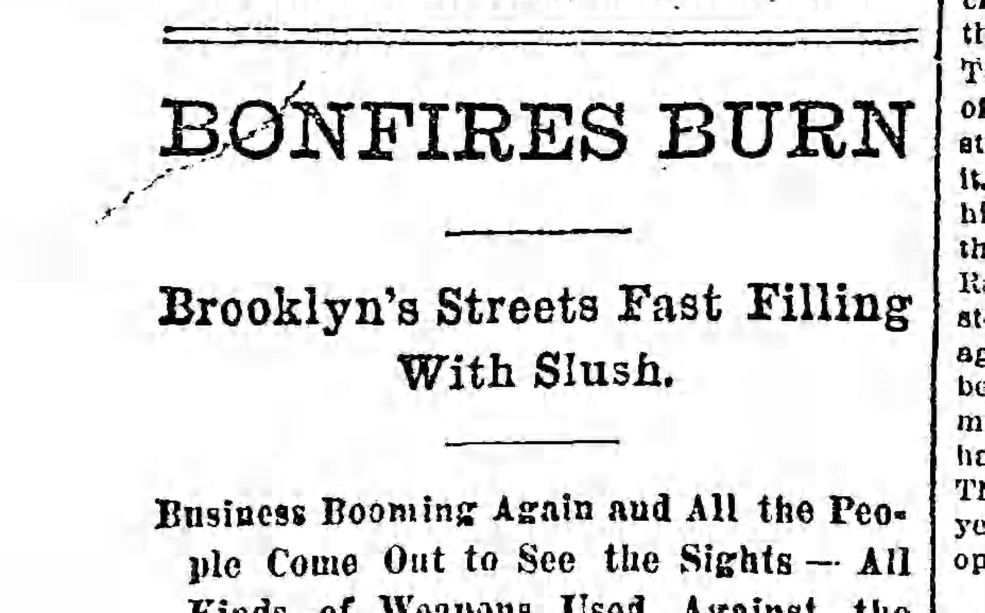BROOKLYN’S “GREAT WHITE HURRICANE” (1888)
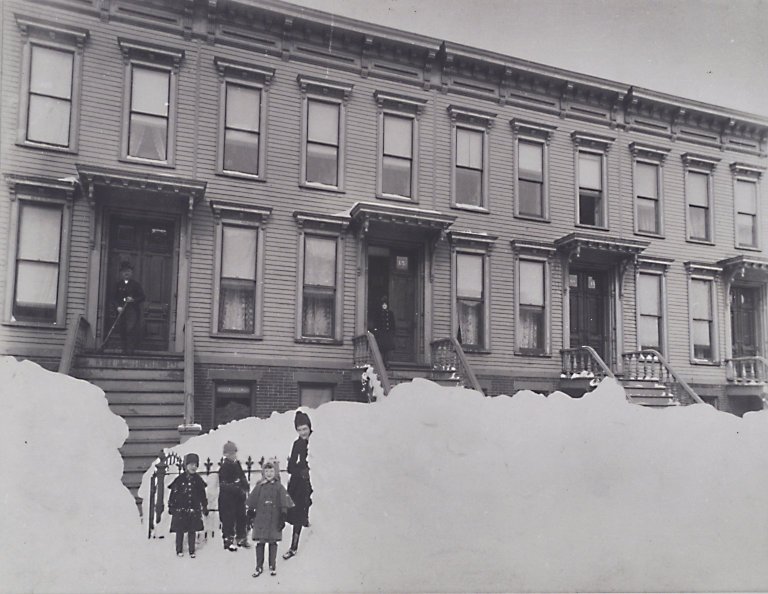
“Brooklyn awoke this morning to find itself in the hands of the blizzard.”
So read the morning edition of the Brooklyn Daily Eagle almost 130 years ago on Monday, 12 March 1888, about the record snowstorm that, over a day-and-a-half period, dropped up to three feet of snow on the city, produced sustained winds of 40 miles per hours, and created snowdrifts in some places in excess of 50 feet! Nearly all transportation was shut down completely and many Brooklynites were confined to their homes for up to a week.
While the city slept the rain that had rendered last evening slightly unpleasant had turned to snow, the wind had increased to a tempest and all life was driven from the streets.
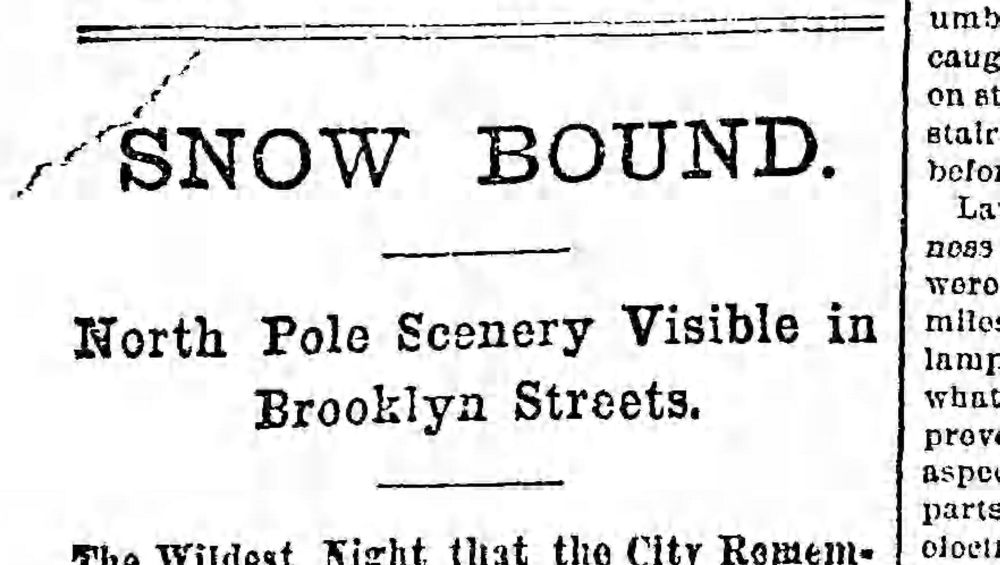 Street cars were unable to proceed. The horses were detached and taken to the nearest place of shelter. The inmates of the cars saw the huge drifts of snow pile up above the window ledges, heard the shrieks of the wires above their heads and did not leave the cars unless an open house was very near at hand.
Street cars were unable to proceed. The horses were detached and taken to the nearest place of shelter. The inmates of the cars saw the huge drifts of snow pile up above the window ledges, heard the shrieks of the wires above their heads and did not leave the cars unless an open house was very near at hand.
It was about 1 o’clock when the storm became furious and it raged for ten hours with undiminished violence. Those who ventured out during the morning were treated to a view of the city unparalleled in its history. During the entire morning there was little concerted effort, except along the principle business part of Fulton Street, to open traffic or carry on any business.
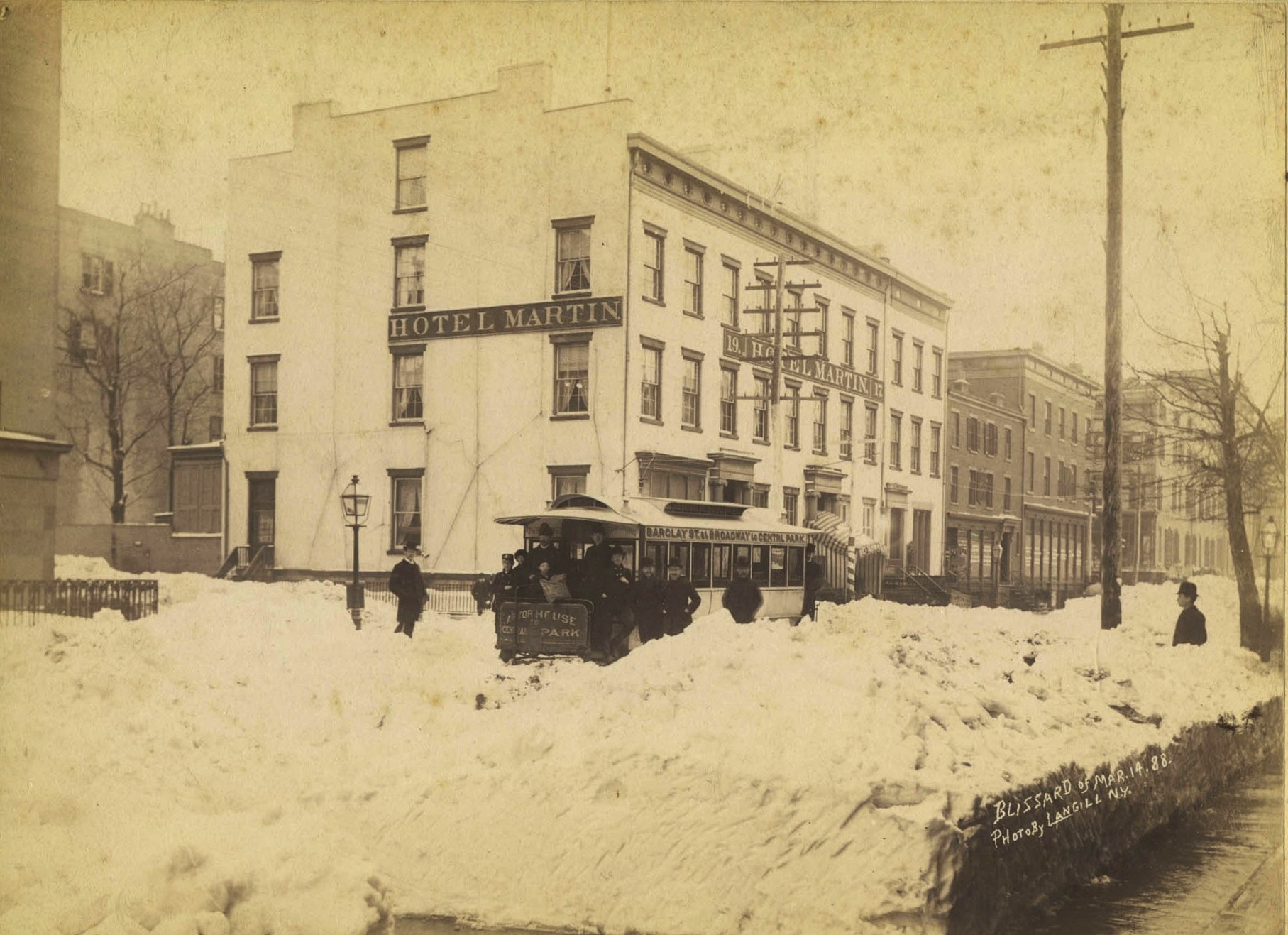 Half the city felt that they were blockaded in their homes. They heard the roar of the tempest and saw the streets closed as far as the eye would reach by mountains of snow, while thick white clouds were rushing now up and down the street and occasional sharp hail struck the windows with a rattle like a rain of leaden shot.
Half the city felt that they were blockaded in their homes. They heard the roar of the tempest and saw the streets closed as far as the eye would reach by mountains of snow, while thick white clouds were rushing now up and down the street and occasional sharp hail struck the windows with a rattle like a rain of leaden shot.
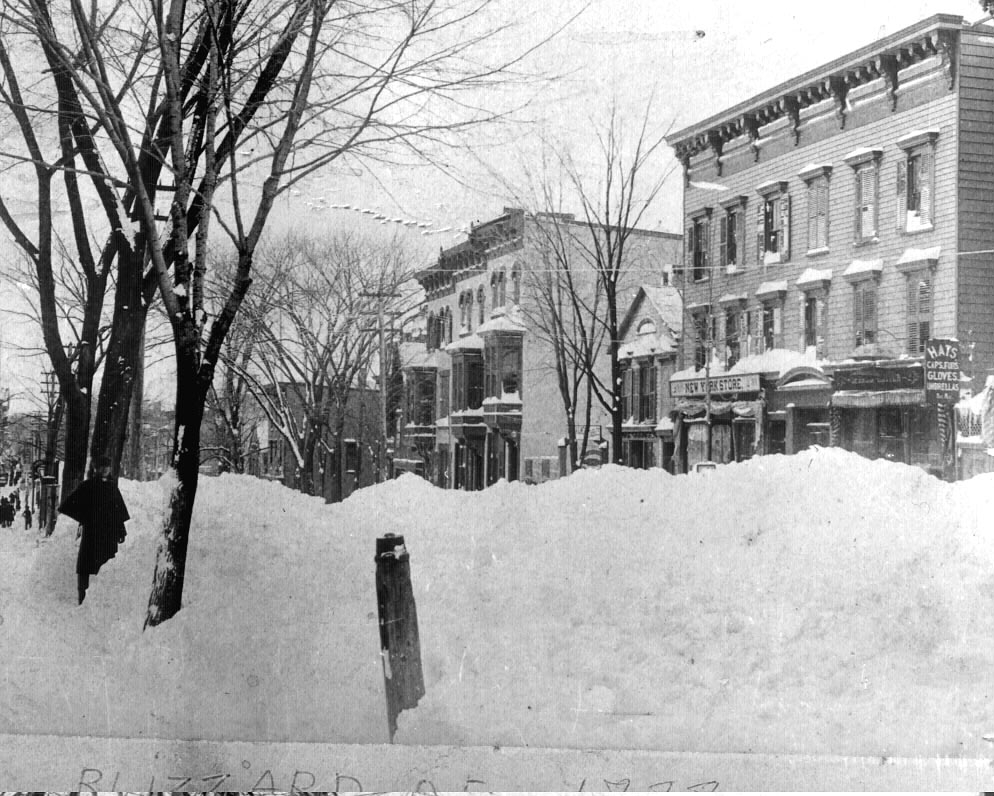
The following day, the paper reported thus:
The storm captured all kinds of things. On Fifth avenue, Atlantic avenue and Boerum place it has ten cars and there must be nearly thirty cars of the Atlantic Avenue Railroad abandoned in the drifts.
As the night settled down the storm grew wilder. The ferries ceased to run and so did the bridge. The snow came down in avalanches and it was positively dangerous to venture abroad.
 Loeser & Co. closed early and sent their employes home in sleighs and wagons. A.D. Matthews sent their employes home in sleighs and wagons, and those who lived far out were given rooms at hotels. This morning John Gibb, Jr., came down early to Loeser’s and ordered the store closed and sent all the employees home. Previous to this the uniformed brigade of ushers had shoveled away the snow from the front of the building.
Loeser & Co. closed early and sent their employes home in sleighs and wagons. A.D. Matthews sent their employes home in sleighs and wagons, and those who lived far out were given rooms at hotels. This morning John Gibb, Jr., came down early to Loeser’s and ordered the store closed and sent all the employees home. Previous to this the uniformed brigade of ushers had shoveled away the snow from the front of the building.
Then when it was all over, and Brooklynites attempted to emerge from their homes to view the damage, they realized, in many cases that they were going to have to dig themselves out. Over the next few days they even began trying to rid themselves of some of the snow by building fires and melting it away.
———————————————————————————————————————–
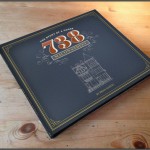 The story you have just read was composed from extensive historical research conducted by The Brownstone Detectives. We perform in-depth investigations on the historic homes of our clients, and produce for them their very own House History Books. Our hardbound books contain an illustrated and colorful narrative timeline that will bring the history of any house to life. Contact us today to begin discovering the history of your home.
The story you have just read was composed from extensive historical research conducted by The Brownstone Detectives. We perform in-depth investigations on the historic homes of our clients, and produce for them their very own House History Books. Our hardbound books contain an illustrated and colorful narrative timeline that will bring the history of any house to life. Contact us today to begin discovering the history of your home.
